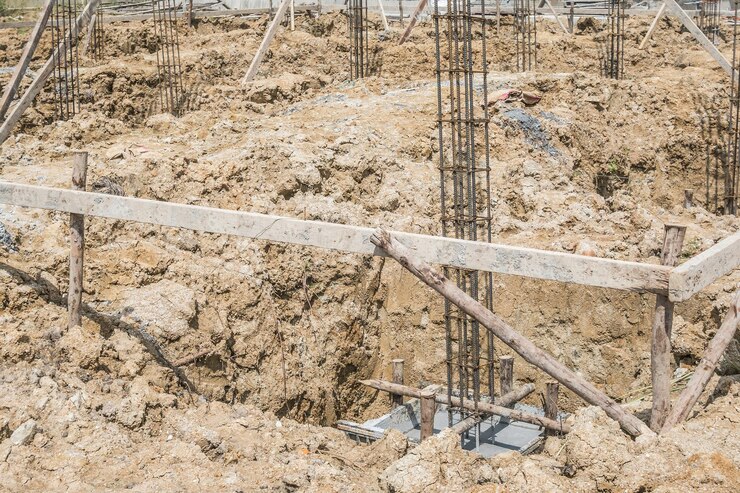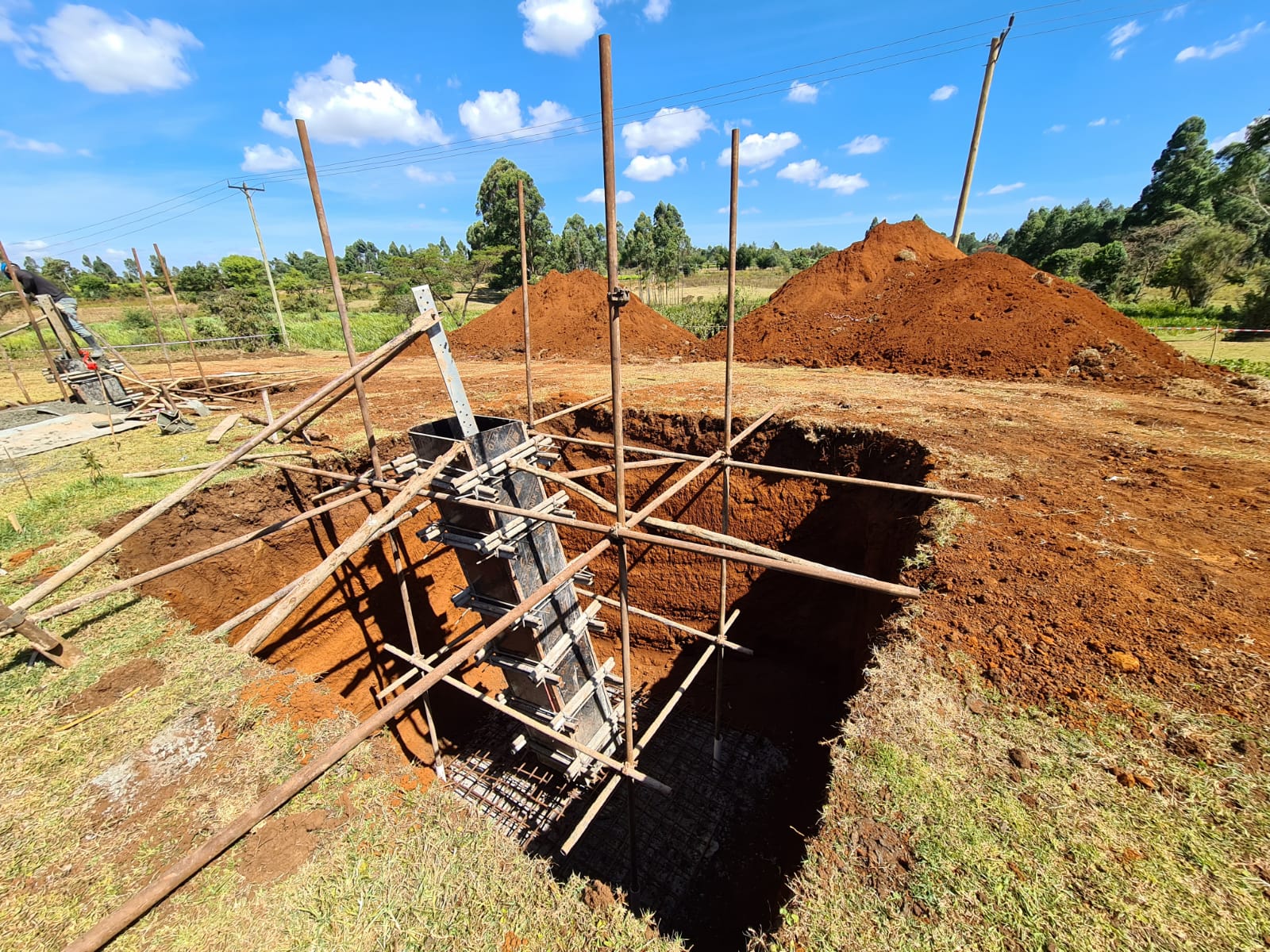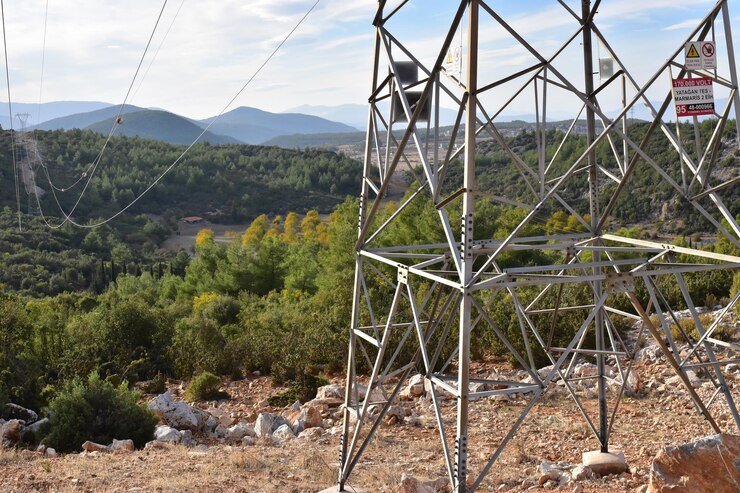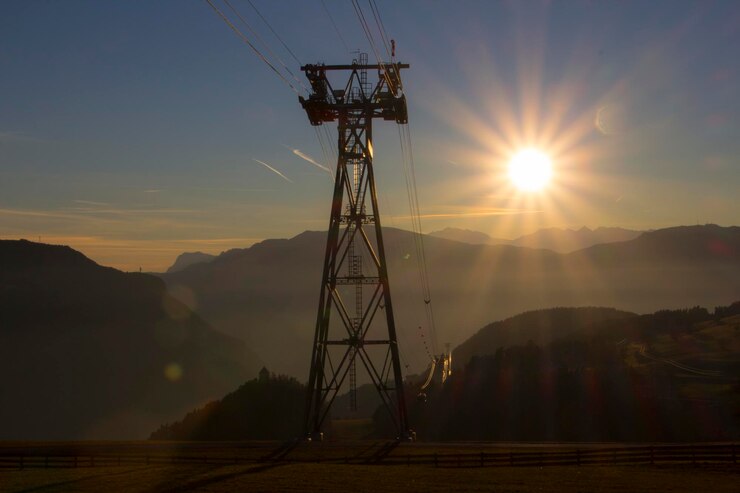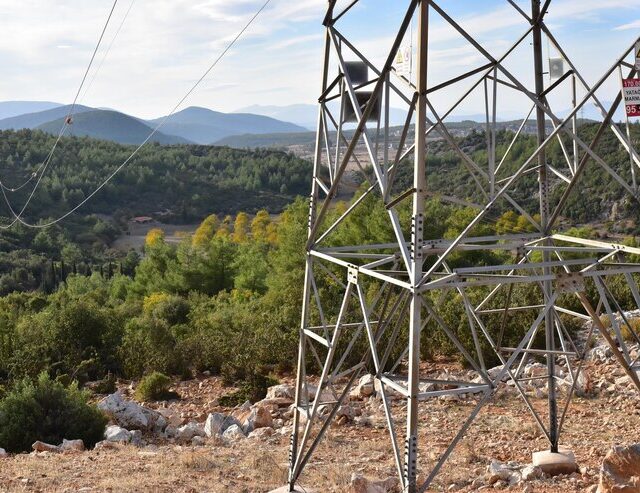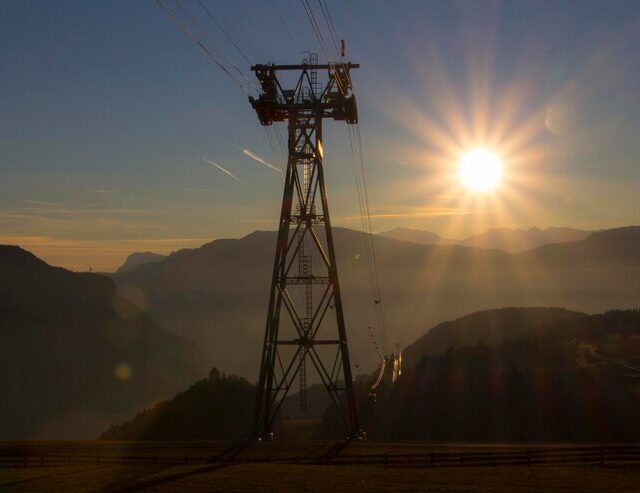Key Objectives:
- To establish strong and stable tower foundations that can withstand environmental forces such as wind, earthquakes, and the weight of the transmission line.
- To ensure the towers are installed at the proper locations along the planned route, considering factors like terrain, access, and regulatory requirements.
- To create a foundation that will support the transmission towers over the long term, preventing any potential instability or structural failure.
The setting for 132kV tower bases (Kisii – Awendo) refers to the process of establishing the foundation or base for electrical transmission towers along the 132kV transmission line between Kisii and Awendo. This is a critical part of the construction process for high-voltage transmission lines, ensuring that the towers are securely anchored to support the electrical conductors over long distances.
Project Overview:
The purpose of this project is to construct and set the foundations for transmission towers that will support the electrical conductors of the 132kV transmission line between Kisii and Awendo, two regions in Kenya. This line is integral for transmitting electricity from the power generation sources to consumers in those regions.
Key Objectives:
- To establish strong and stable tower foundations that can withstand environmental forces such as wind, earthquakes, and the weight of the transmission line.
- To ensure the towers are installed at the proper locations along the planned route, considering factors like terrain, access, and regulatory requirements.
- To create a foundation that will support the transmission towers over the long term, preventing any potential instability or structural failure.
Steps for Setting 132kV Tower Bases:
- Site Survey and Planning:
- Route Survey: A detailed survey of the entire route from Kisii to Awendo is conducted. This involves identifying the precise locations where the transmission towers will be placed and the soil conditions at each site.
- Geotechnical Investigation: This is essential for understanding the soil characteristics, such as strength, bearing capacity, and moisture content. The results help to design the appropriate foundation for each tower.
- Clearance and Access: Ensure that the selected sites for the tower bases are clear of any obstructions, including trees, buildings, or other infrastructure, and have appropriate access roads for construction equipment and materials.
- Foundation Design:
- The design of the tower base will depend on factors such as soil conditions, tower height, wind load, and local topography.
- The foundation typically includes the following elements:
- Concrete Pad: A reinforced concrete pad that forms the base of the tower, ensuring it can support the weight and stress of the tower structure.
- Anchor Bolts: Large steel bolts embedded into the concrete pad to secure the tower base to the foundation.
- Footings: If required by soil conditions, additional footings may be used to distribute the weight of the tower over a larger area.
- Design Load: The foundation must be designed to handle the loads imposed by the tower, including the weight of the tower itself, the electrical conductors, and any external forces such as wind or seismic activity.
- Mobilization and Site Preparation:
- Clearing and Grading: The selected tower base sites are cleared of vegetation, debris, and any other obstacles. The land is graded to ensure that the foundation can be set at the proper level.
- Temporary Access Roads: If necessary, temporary roads or tracks are created to provide access for construction vehicles and heavy equipment such as cranes and excavators.
- Excavation and Concrete Work:
- Excavation: Excavation is done to the required depth, depending on the foundation design. The depth of the excavation is influenced by factors such as the type of soil and the load requirements.
- Formwork and Reinforcement: Once the excavation is complete, formwork (wooden or metal molds) is placed to shape the foundation. Reinforcement steel bars (rebar) are added to the formwork to strengthen the foundation.
- Concrete Pouring: The foundation is poured with high-strength concrete, ensuring that the mixture is appropriate for the conditions and can withstand long-term load and environmental stress. The concrete may be poured in stages, depending on the size of the foundation.
- Curing: The concrete is allowed to cure for a period of time, typically 7 to 28 days, to achieve the required strength and durability.
- Anchor Bolt Installation:
- Anchor Bolt Placement: Large steel anchor bolts are embedded in the foundation while the concrete is still wet. These bolts are used to secure the tower base to the foundation once the tower is erected.
- The positioning of the bolts is crucial as they need to be aligned precisely with the tower base plate.
- Installation of Tower Base:
- Tower Placement: After the foundation has cured and the anchor bolts are set, the transmission tower is moved into place using cranes or other heavy equipment.
- Bolting the Tower to the Foundation: The base of the tower is placed over the anchor bolts, and the tower is bolted to the foundation securely.
- Leveling: The tower is leveled to ensure it stands upright and correctly aligned with the planned transmission line.
- Quality Control and Testing:
- Foundation Integrity Test: The foundation is tested to ensure it meets the design specifications, especially regarding strength, load-bearing capacity, and resistance to external forces.
- Alignment Checks: The tower and foundation are checked for proper alignment, ensuring the tower is positioned correctly for the planned route of the transmission line.
- Safety Inspections: Ensuring that all safety protocols are followed throughout the installation process, particularly in terms of worker safety and equipment handling.
- Final Site Cleanup:
- Once the foundations are set and the towers are installed, the construction site is cleaned up. Any leftover materials, debris, or equipment are removed, and the surrounding area is restored.
- Post-Construction Monitoring:
- Monitoring: After the transmission towers are fully erected, regular monitoring of the foundation and structural integrity is conducted to ensure the towers remain secure throughout their lifespan.
- Routine Inspections: Routine inspections are carried out to identify any issues related to soil settling, tower movement, or other factors that could affect the stability of the towers.
Materials and Equipment Used:
- Concrete: High-strength concrete is required for the foundations.
- Rebar (Reinforcement Steel): Steel bars are used to reinforce the concrete.
- Anchor Bolts: Large steel bolts to secure the towers to the foundation.
- Crane/Heavy Equipment: Used for lifting and positioning the towers.
- Excavators and Graders: For excavation and site preparation.
- Safety Equipment: Personal protective equipment (PPE) such as helmets, safety boots, gloves, and safety harnesses.
- Location
- Kisii-Awendo
- Year
- 2023
- Technology
- Advanced
- Service
- Electrical Engineering

